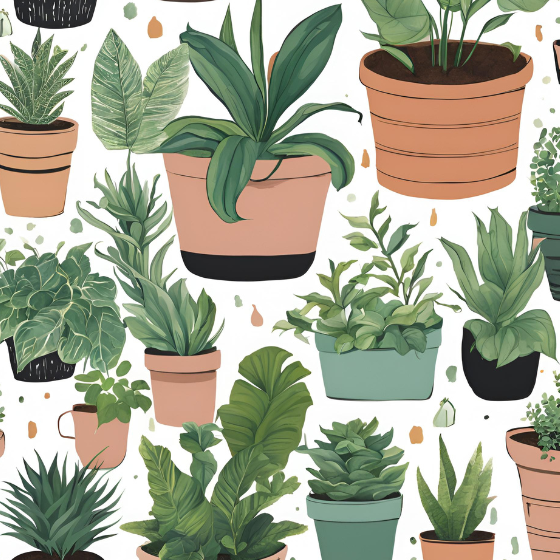Printable House Plant Journal and Tracker; House plants bring a touch of nature into our homes, enhancing the ambiance and improving indoor air quality. Yet, the joy of having a thriving indoor garden comes with its own set of challenges. Keeping track of plant care routines, growth patterns, and potential issues can quickly become overwhelming. That’s where house plant journals and trackers come into play. These tools not only help in managing plant care but also make the process more organized and enjoyable. In this article, we’ll explore five essential printable house plant journals and trackers that will elevate your plant care routine to the next level.

1. Plant Care Calendar
Overview

A Plant Care Calendar is a vital tool for any plant enthusiast. It serves as a structured schedule to track essential care activities, such as watering, fertilizing, and repotting. With a printable calendar, you can ensure that each plant receives the appropriate attention it needs at the right time.
Key Features
- Monthly or Weekly Layout: Choose between a monthly or weekly view depending on how often you need to monitor plant care. A monthly layout gives a broad overview, while a weekly layout allows for more detailed tracking.
- Space for Plant-Specific Care Instructions: Customize the calendar to include specific instructions for each plant, such as watering frequency or light requirements.
- Reminders for Repotting and Seasonal Tasks: Add reminders for tasks like repotting or adjusting care routines with changing seasons, ensuring that your plants always get the right care.
Benefits
A Plant Care Calendar is invaluable for maintaining a consistent care routine. It helps prevent over or under-watering by providing clear reminders and reduces the risk of neglect. By keeping detailed records, you’ll also be able to identify and address any issues more promptly.
2. Plant Growth Tracker
Overview

Tracking your plant’s growth over time is both satisfying and informative. A Plant Growth Tracker allows you to monitor the progress of your plants, providing a visual and documented history of their development.
Key Features
- Sections for Recording Growth Metrics: Record plant height, leaf count, and other growth indicators. This information helps you understand how well your plant is thriving and if it’s meeting growth expectations.
- Space for Photos: Document your plant’s growth with periodic photos. This visual record can be particularly rewarding and helps you see changes that might not be apparent day-to-day.
- Notes Area for Observations: Jot down observations about changes in growth, any environmental factors that might be affecting the plant, or adjustments you’ve made to its care.
Benefits
A Plant Growth Tracker helps you identify growth patterns and assess the effectiveness of your care techniques. It provides motivation as you see your plants flourish and helps you make informed decisions about their care based on documented progress.
3. Pest and Disease Log
Overview

Pests and diseases can pose significant challenges to house plants. A Pest and Disease Log is an essential tool for tracking these issues, documenting treatments, and monitoring their effectiveness.
Key Features
- Sections for Recording Details: Document the date of the pest or disease occurrence, the type of issue, and the treatment applied. This record helps you understand the nature of recurring problems and the effectiveness of different treatments.
- Space for Follow-Up Notes: After applying treatments, use this space to note the results and any further actions required. This can help you refine your approach and prevent future issues.
Benefits
A Pest and Disease Log is crucial for managing plant health. It helps you track and address recurring issues, evaluate treatment success, and ultimately enhance your plant’s overall well-being. By maintaining a detailed log, you can develop better strategies for dealing with plant health challenges.
4. Plant Inventory Sheet
Overview

Keeping an organized inventory of your house plants is essential for effective plant care. A Plant Inventory Sheet helps you track your entire plant collection, making it easier to manage and maintain.
Key Features
- Sections for Plant Details: Include plant name, variety, purchase date, and its location in your home. This information helps you keep track of each plant’s background and care requirements.
- Space for Care Instructions: Record specific care instructions and any special needs for each plant. This ensures that you can provide the appropriate care without having to remember every detail.
Benefits
A Plant Inventory Sheet simplifies the management of your plant collection. It helps you keep track of each plant’s needs and history, making it easier to plan care routines and future plant purchases. With a comprehensive inventory, you’ll have a clear overview of your indoor garden.
5. Plant Care Instructions Sheet
Overview

Each plant has its own unique care requirements. A Plant Care Instructions Sheet allows you to document and refer to these specifics, ensuring that each plant receives the tailored care it needs.
Key Features
- Sections for Specific Care Instructions: Include details on watering needs, light preferences, temperature requirements, and fertilizing schedules. This customization helps you provide the best care for each plant.
- Space for Special Notes: Add any additional notes or adjustments based on your observations. This flexibility allows you to adapt care routines as needed.
Benefits
A Plant Care Instructions Sheet ensures that you provide precise care for each plant. It reduces the guesswork involved in plant maintenance and improves overall plant health. By having detailed care instructions readily available, you can address each plant’s needs more effectively.
How to Use These Printables
Step-by-Step Guide
- Download and Print: Obtain the printables from your preferred source and print them on high-quality paper.
- Fill Out Information: Start by entering relevant details for each plant in the appropriate sections of the printables.
- Regular Updates: Update the journals and trackers regularly to keep accurate records. This includes noting changes in growth, care routines, or pest issues.
- Review and Adjust: Periodically review the information and adjust your care routines based on the documented data.
Tips for Keeping a Plant Journal
- Consistency is Key: Regularly update your journals and trackers to ensure accurate and helpful records.
- Be Detailed: Include as much detail as possible in your notes to provide a comprehensive view of your plant’s health and care needs.
- Use Visuals: Incorporate photos and drawings to enhance your records and make tracking more engaging.
Where to Find and Download These Printables
- Resources: Many websites offer free or paid downloadable printables for plant care journals and trackers. Some popular sources include Etsy, Pinterest, and dedicated plant care websites.
- DIY Options: If you prefer a personalized touch, consider creating your own printables using design tools like Canva or Adobe Illustrator. Customize them to fit your specific needs and preferences.
Conclusion
House plant journals and trackers are invaluable tools for any plant lover. By using printables like a Plant Care Calendar, Growth Tracker, Pest and Disease Log, Plant Inventory Sheet, and Plant Care Instructions Sheet, you can enhance your plant care routine and ensure a thriving indoor garden. Start using these tools today to make plant care more organized, efficient, and enjoyable. Happy gardening!

